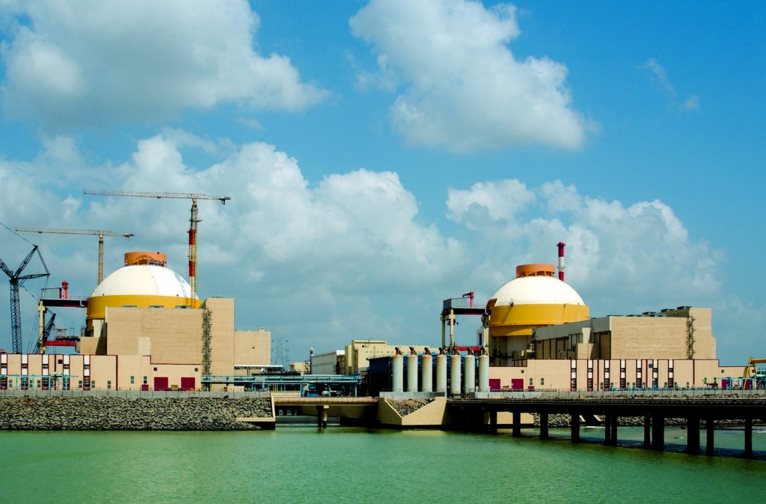Rosatom offers comprehensive solutions to its clients for the desalination of seawater. These desalination facilities integrated with a source of electrical energy could be implemented on the basis of NPP evaporation technologies, at floating nuclear power plants, and to ensure the supply of power for population centres and industries, as well as for a NPP’s own needs.
The existing Rosatom offer encompasses desalination facilities that employ multi effect distillation technology and are integrated into a nuclear power plant. Such installations use steam that has already been used for electricity production. The simultaneous production of electricity and desalinated water at NPPs has proved its effectiveness thanks to a number of advantages: relatively low costs, sustainability (the use of a rather small amount of chemicals for the desalination process) as well as «economies of scale». The NPP produces large amounts of heat and steam, which is why a desalination facility integrated into a nuclear power plant is capable of ensuring supplies to areas with a population of up to 1 mln. people.
Rosatom possesses a generalized solution for the integration of a desalination facility into an NPP based on the VVER-1000 or VVER-1200 reactors. A classic example of this type of integration are the co-generation units that have been operating at Russian NPPs for many years, and are used to heat population centers in the vicinity.

Calculations show that if an NPP is constructed with a reactor that has a capacity of 1,200 MW 8 % of the total steam flow could be directed for desalination, which corresponds to a productivity for the MED-facility of 170 thousand m3/d. The integration of these two types of activities needs to be done at the design stage, and results in costs savings thanks to the joint effective use of resources (steam, hydraulic structures, supporting systems) and also creates synergy.
Given all the various designs and attempts to assimilate nuclear desalination no one insofar has ever managed to surpass the results achieved by the Russian nuclear industry. The nuclear facility with a BN-350 sodium cooled fast neutron reactor, located on the Caspian Sea peninsula 12 km from Aktau, supplied 135 MW of electrical power, and produced up to 120 thousand m3 per day of drinking water for 27 years.

A large facility in India with a capacity of 10,2 thousand m3 per day was commissioned at the Kudankulam NPP, which was constructed by Rosatom. The purpose of the project was to obtain the water necessary for cooling during NPP operation, as well as to ensure drinking water supplies to the population centres located nearby.
